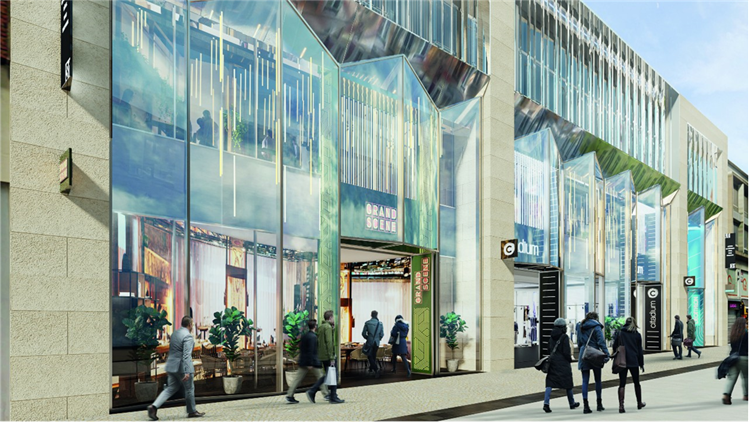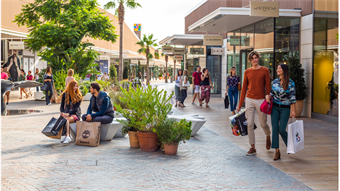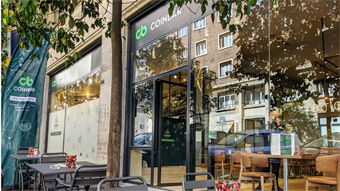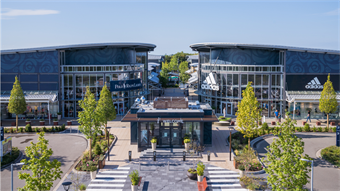Masters of mix
- In Strategy
- 11:41, 18 November 2020
- 110712 Views

It’s been clear for a while that mixed-use schemes, exposing property owners to a range of asset classes, represent a smart play.
As the retail real estate industry continues to evolve, single-use assets look less and less relevant in city hearts that are emerging as work, live and play destinations. But creating successful schemes is about far more than just tweaking usage percentages – it has become a true science of ‘mixology’, according to Thierry Cahierre, Managing Director of Redevco France.
‘More than simply mixed-use, it’s about creating the right combination of uses,’ Cahierre says. ‘There’s no point in putting together users in a building with no connection. Today, a tenant doesn’t just ask which floor they are on, they want to know what the building is about, who else is in it, and what else they can do there. The days of pure office, pure retail, or pure residential schemes are over.’
Redevco’s latest scheme in Lille, Le 31, has been dubbed ‘mixed-use 3.0’ for embracing this concept fully. A property that was acquired in 2017 for the joint venture between Hermes Investment Management and Redevco is currently being transformed into a vibrant project with a total surface of 25,000 m2, including 2,400 m2 of retail, 1,700 m2 of food and drink outlets, 5,200 m2 of leisure activities, 8,000 m2 of office and coworking space backed by Unofi, a 120-room Okko hotel and 600 parking spaces.
Special blend
The aim is to unite a special blend of tenants that jointly offer a unique combination of products and services, creating something greater than the sum of its parts.
In terms of the occupiers, Redevco specifically focused on entrepreneurs that understand the new ways of living and working in today’s society and pledged to contribute to an innovative and dynamic urban concept. The result is a mix of strong, complementary brands that include leisure activities, streetwear, street food, hotel, offices and coworking, including the likes of Citadium, Climb Up, Decathlon, Fitness Park, Grand Scene, Okko, Team Break and Wojo.
Taking into account the boom in ecommerce and new ways of living, the retail spaces at Le 31 are designed to become destinations in their own right, where consumption no longer feels automated but an enriched, personalised experience for consumers and visitors.
‘Le 31 is a perfect example of rethinking the city,’ Cahierre notes, ‘how we conceive an asset in its environment. When we arrived on the scene, the property comprised 25000 m² fully dedicated to retail, with a big façade and stores on five floors. It was near to being closed down, despite being on the best shopping street in an incredibly lively city.
'We saw no reason why this building couldn’t attract shoppers, and decided to contain the retail on the -1, ground and first floors, with offices and a hotel above. We also asked ourselves – is our role merely to compile? No, we have to go further, combine with sense and logic.
'So the F&B and leisure elements – which are nearly three times as large as the retail component - help tie all the elements together, providing amenities for all the tenants. At the end of the day, we’ve created more than a mixed-use building – we’ve created a community. All the tenants bought into the concept, which is a kind of commercial co-living. It’s already fully let, and will open in March 2021.’
Retail strengths
Continues Cahierre: ‘Cities are our core business. We want to be urban specialists, around our core specialism of retail. But urban is not just city centres – it also includes metropolitan zones where schemes such as retail parks can thrive. And retail parks are another big success story this year.’
He adds: ‘What we have discovered is that when a retail park is well located, has good accessibility, and has the legitimate right to be there, it works very well.’ Even more, this segment has proved especially resilient in this pandemic year. ‘Retail parks are the winners of this crisis,’ Cahierre underlines.
‘Benefitting from dynamic catchment areas, they have lots of space and open-air appeal; they meet needs for essential goods and services, but are also evolving beyond that. Many are like mini city centres, with the attractions of downtown, but located in conurbations that can be reached by car. We are even seeing co-working tenants moving into these kinds of assets, and there’s no reason why their leisure offer can’t continue to expand, with hotels a good fit as well. This is also in line with pandemic trend of seeking out neighbourhood amenities, to avoid an unnecessary commute.’
Pandemic lessons
Just like the success of its retail parks, Redevco has learned broader lessons from this year’s health crisis about surviving and thriving in an evolving industry. ‘The pandemic has served to accelerate trends which were already present in retail,’ Cahierre underlines.
‘From ecommerce to new concepts, fusion retail to the evolution of formats – the pandemic is not changing the future but rather collapsing timelines. It’s true that it has accelerated some negative trends, but it has also brought forward some positive ones. I’m optimistic, because I think acceleration is good – the best way to get out of a crisis is to drive through it. I was actually surprised over the past few years about the slow pace of change, dealing with old fashioned systems and old ways of thinking in retail. Now, thanks to the crisis, change is afoot, and the sense of life has been brought into greater focus, altering how we consume, interact, live and grow.’
Moving forwards, one of the biggest challenges the retail real estate industry is facing is the sheer volume of obsolete retail stock in modern cities. Cahierre notes that while some will be ripe for modernisation or conversion, other buildings will simply have to go. ‘Those assets which perhaps have lacked investment to date, but have good fundamentals, can be repositioned into mixed-use concepts, reducing the amount of retail,’ he suggests.
‘If the asset has truly outlived its usefulness, then it requires a complete rethink. Up-and-coming use classes, such as last mile, will increasingly erupt into urban landscapes; the industry has the same concerns as retail, and shares the same customer base. We welcome this industry and are happy to work with logistics tenants where we can involve them in what we are doing. The main issue is an operational concern, as they require vehicle access and we have to work out how they can consign parcels in cities in a more sustainable way.’
He concludes: ‘We recognise that the future brings change, therefore we are expanding our horizon beyond retail by transforming existing assets into future-proof mixed-use locations and we are excited to further evolve our business into new sectors within the urban area.’






